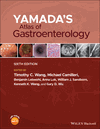Primary biliary cholangitis
Summary
This chapter illustrates the clinical manifestations, histopathology, clinical course, and management of primary biliary cholangitis (PBC). PBC is a chronic liver disease that is defined by slowly progressive, nonnecrotizing inflammatory destruction of the biliary epithelial cells lining the small to medium-sized interlobular ducts. Xanthomas are more often seen in PBC patients with prolonged cholestasis but can also be seen before the onset of cirrhosis. CREST (Calcinosis, Raynaud phenomenon, Esophageal dysmotility, Sclerodactyly, Telangiectasias) syndrome is seen in 5–7% of PBC patients. A florid duct lesion with granulomatous involvement of the bile duct is the most specific histological finding suggestive of the diagnosis of PBC. The clinical course of PBC has improved over the past decade. Patients are more likely to be diagnosed at an earlier stage and to receive treatment with UDCA. Biochemical nonresponders progress faster than those who achieve significant improvement in alkaline phosphatase.



